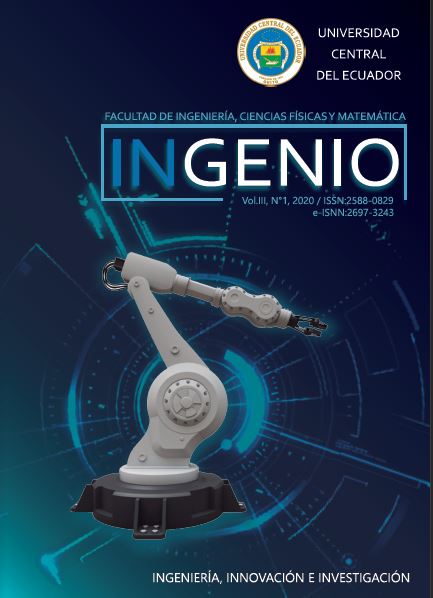Tecnologías de Fabricación y su Influencia en el Diseño Industrial
Contenido principal del artículo
Resumen
La Teoría de la Autopoiesis de Patrik Schumacher, desarrollada para el Diseño Arquitectónico puede ser plasmada a través de la aplicación interdisciplinaria del diseño y de varias disciplinas de Ingeniería: Civil, Estructural, Mecánica y de Manufactura. En este ensayo se hace una extrapolación de esa teoría con el objetivo que sea el fundamento teórico y conceptual que sustente el diseño de productos para ser manufacturados en serie a nivel industrial. De esta manera se pretende difundir en Ecuador una metodología de diseño paramétrico de productos.
Como elemento que guía el diseño conceptual del objeto tomado como caso de estudio, se escogió el símbolo tri dimensional del infinito debido a su validez universal para distintas culturas alrededor del mundo. Así se plantea nuevos modelos de superficies para estructuras, a partir de superficies canónicas basadas, por ejemplo, en el círculo o en la elipse. Aquí se presenta una metodología de diseño y de propuesta de forma que puede adaptarse para resolver el diseño de producto de joyas, envases y griferías, por ejemplo, o estructuras como esculturas, puentes, estadios y coliseos.
Descargas
Métricas
Detalles del artículo

Esta obra está bajo una licencia internacional Creative Commons Atribución-NoComercial-SinDerivadas 4.0.
Citas
J. Trujillo y J. Cadena, El pensamiento mitológico como sistema cognitivo de las etnociencias, Quito : Revista Anales, 2015.
V. L. Duc, «Viollet-Le-Duc y la visión europea de la Arqueología maya en el siglo XIX,» 09 06 1980. [En línea]. Available: http://www.danielschavelzon.com.ar/?p=2519. [Último acceso: 25 05 2019].
Jácome-Monar, E. P. a. Rojas y M. C. Valverde, «La Autopoiesis de la Arquitectura como Marco Teórico para Sustentar el Uso Eficaz de la Tecnología en el Diseño de Producto,» TECNOLOGÍA & DISEÑO, 2018.
RodrÍguez y M. a. Torres, «Autopoiesis, la unidad de una diferencia: Luhmann y Maturana,» Sociologías, pp. 106--140, 2003.
Engineering, «engineering.com,» 27 03 2017. [En línea]. Available: https://www.engineering.com/DesignerEdge/DesignerEdgeArticles/ArticleID/14609/3D-Printed-Device-Changes-Color-in-Response-to-Mechanical-Stresses.aspx?ENGCOM=. [Último acceso: 2019].
J. A. V. Angulo, Análisis y Diseño de Piezas con Catia V5 2a Ed.: Método de elementos finitos, Marcombo, 2011.
P. A. Miguel, «Escher y la banda de Moebius. Antonio Córdoba.,» Madrid Blogs, 15 05 2020. [En línea]. Available: https://www.madrimasd.org/blogs/CienciayPoesia/author/pedroalonso. [Último acceso: 2019].
M. P. Bendsøe y S. Ole, «Esquemas de interpolación de materiales en optimización de topología.,» Archivo de mecánica aplicada, nº 69, pp. 635-654, 1999.
M. P. Bendsøe y O. Sigmund, Optimización de topología: teoría, métodos y aplicaciones., Springer Science & Business Media, 2013.
J. L. Medina Pasaje, Metodología y Herramientas UML para el Modelado y Análisis de Sistemas de Tiempo Real Orientados a Objetos, Santander: Universidad de Cantabria, 2006.
S. Ahlquist y A. Menges, «Metodologías de diseño computacional basadas en el comportamiento: procesos integradores para forzar estructuras materiales definidas,» CUMINCAD, 2011.
M. A. Anido, R. López y H. E. Rubio Scola, «Las supersuperficies en el aprendizaje de la geometría,» Revista latinoamericana de investigación en matemática educativa, vol. 9, nº 3, pp. 335-360, 2006.
A. Ermakova, «Elementos finitos adicionales y cargas adicionales para el análisis de sistemas con varias propiedades no lineales.,» Procedia Engineering, vol. 150, pp. 1817-1823, 2016.





